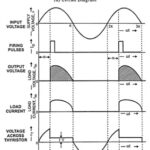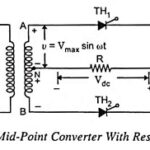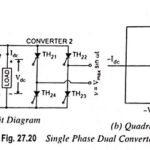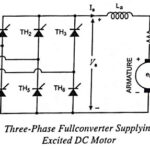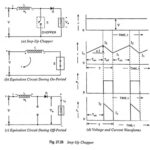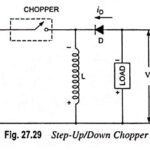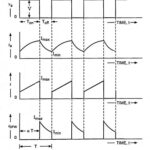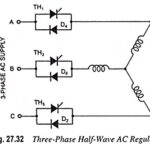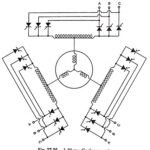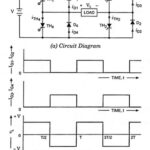Power Converters Articles:
 What is a Power Converter? Solid-state power converter are employed for obtaining the appropriate form of electrical energy such as direct current or adjustable-frequency alternating current (required to operate most electronic circuits and motor drives) from fixed-frequency alternating current. Types of Power … (Read More)
What is a Power Converter? Solid-state power converter are employed for obtaining the appropriate form of electrical energy such as direct current or adjustable-frequency alternating current (required to operate most electronic circuits and motor drives) from fixed-frequency alternating current. Types of Power … (Read More)Single Phase Half Wave Controlled Rectifier with Resistive Load and Inductive Load: In a Single Phase Half Wave Controlled Rectifier only one SCR is used in the circuit. It is included in between the ac source the load. The transformer is … (Read More)
Single Phase Full Wave Controlled Rectifier (or Converter): In case of Single Phase Full Wave Controlled Rectifier (or Converter) both positive and negative halves of ac supply are used and, therefore, the effective value of dc voltage is high and ripple … (Read More)
Single Phase Dual Converter Circuit Diagram with Four Quadrant of Operation: We have seen that Single Phase full Converters with inductive loads allow only a two-quadrant operation. If two of these full converters are connected back to back, it is known … (Read More)
Three Phase Converter Circuit: For large sized (rating exceeding 15 kW) motors 3-phase drive is employed. The output voltage of a 3-phase converter has less ripple contents than that of single-phase converter. So the filtering requirements for smoothing out the load … (Read More)
Step up Chopper – Definition, Circuit Diagram and its Working Principle: In a step-down chopper the output voltage lies between zero and supply voltage. However, there are techniques by which the output of a chopper obtained is higher than the supply … (Read More)
Step up Step down Chopper or Buck Boost Converter – Working Principle: A chopper can also be used for stepping up or down the supply voltage by varying its duty cycle. This is also known as a buck-boost converter. The principle … (Read More)
Step Down Chopper with RLE Load Working Principle: The choppers are widely employed for speed control of dc motors in industrial and traction drives. Figure 27.30 (a) shows the basic Step Down Chopper with RLE Load for the control of a … (Read More)
AC Regulator – Definition and Classification: An ac regulator converts a constant ac voltage into a variable ac voltage of the same frequency. No doubt, ac voltage level can be changed by auto-transformer, tap-changing transformer, saturable reactors etc. These devices have … (Read More)
Three Phase Cycloconverter – Types, Working and Applications: A cycloconverter converts ac at one frequency to an ac of another frequency. Cycloconverters can be classified as single-phase to single-phase, three-phase to single-phase and three-phase to 3-phase devices. They can also be … (Read More)
Inverter – Definition and Classification of Inverters: A device that converts dc power into ac power at desired output voltage and frequency is known as an inverter. Some industrial applications of inverters are for adjustable-speed ac drives, induction heating, standby aircraft … (Read More)
Single Phase Full Bridge Inverter: The main drawback of half-bridge inverter is that it requires 3-wire dc supply. This difficulty can, however, be overcome by using a single phase full bridge inverter shown in Fig. 27.39 (a). It consists of four … (Read More)
